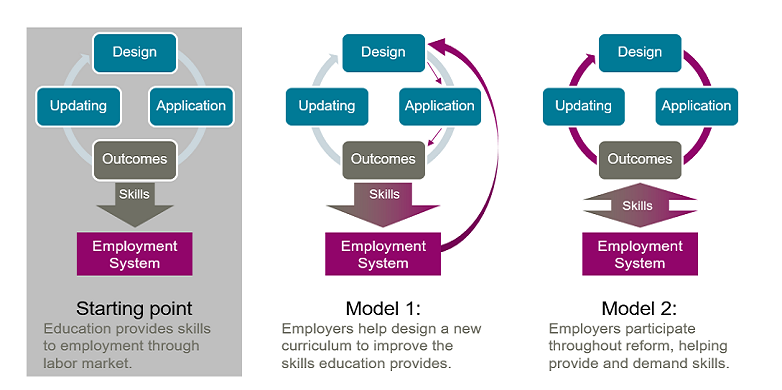The Employer’s Dilemma
Employer engagement and progress in vocational education and training reforms.

Katherine Marie Caves, Ursula Renold
PDF KOF Working Papers Website
Abstract
Employer engagement is a critical part of vocational education and training (VET). However, we know little about forms of employer engagement in the implementation of VET reforms. Employers can be advisors, or can be given roles and responsibilities throughout the cycle of VET processes: helping design curricula, providing workplace training during VET application, and providing feedback or initiating updates. The latter approach asks much more, but the former creates a prisoner’s dilemma where participating firms risk losing their investment to poaching from refraining firms. In the higher-engagement model, employers coordinate with other companies in their sectors and invest, then have the opportunity to earn returns—often during the training period. We follow eight international VET reforms through their first year. We find that cases where employers are highly engaged make more progress, excepting powerful top- down reforms. High employer engagement seems riskier because of the greater investment by firms, but the returns it generates lets high-engagement reforms sidestep the prisoner’s dilemma and improve implementation progress. Read more about our findings in the working paper.
Suggested Citation:
Caves, K. and U. Renold (2016): The Employer’s Dilemma: Employer engagement and progress in vocational education and training reforms, KOF Working Papers, 423, Zurich, December 2016.
